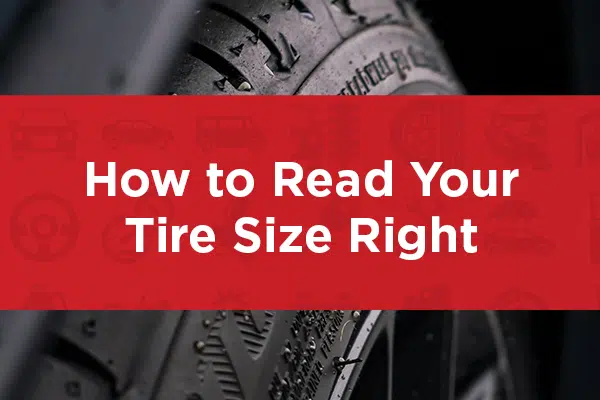How to Read Tire Size and What it Means for Your Car
Understanding how to read tire size on your vehicle is absolutely crucial for maintaining top performance and safety on the road. You can usually find the correct tire size for your particular vehicle in your owner’s manual or on the vehicle itself. In this guide, we’ll break down how to read tire size, what it means for your car, and why getting it right matters.
Understanding Tire Size
Tire size is typically expressed as a sequence of numbers and letters that might appear cryptic at first glance. However, each element in the size code corresponds with vital information:
Width
The first number, written in millimeters, indicates the tire’s width. For example, if the size is P215/60R16, 215 is the width in millimeters.
Aspect Ratio
The aspect ratio represents the tire’s height as a percentage of its width. In our example, 60 means the height is 60% of its width.
Construction
The letter “R” indicates radial construction, which is the most common type for modern vehicles. Radial tires offer excellent performance and longevity.
Rim Diameter
The final number in the sequence specifies the size of the wheel the tire is designed to fit on. In our example, the tire fits a 16-inch rim.
Load Index
The load index is a code that denotes the weight capacity of the tire when fully inflated. This code is usually located after the size description on the sidewall of the tire. Choosing one with the correct load index is essential to ensure it can safely support your vehicle.
Speed Rating
This letter appears after the load index and indicates the maximum speed the tire can handle. Different tires are engineered for different speeds, so matching the speed rating with your vehicle’s capabilities is crucial.
Sticking to the manufacturer-recommended size is always the safest bet for optimal performance. Changing your vehicle’s tire size can significantly impact its handling, drivetrain performance, and fuel economy.
How to Read Tire Size from the Sidewall
To read your tire size from the sidewall, follow these steps:
1. Identify the type of tire
Look for a letter like “P” for “passenger vehicle” or “LT” for “light truck” to determine the intended use.
2. Determine the tire’s width, aspect ratio, and rim diameter
These numbers are displayed in a sequence, such as P215/60R16. The first number is the width, the second is the aspect ratio, and the last is the rim diameter.
3. Understand the tire’s construction type
The letter following the aspect ratio, like “R” for radial, indicates the construction type.
4. Find the load index and speed rating
These two figures are found near the size code, usually at the end. Make sure they match your vehicle’s design.
The sidewall of the tire may also feature other essential information, such as the DOT code, traction rating, and more. Understanding how to read tire size is crucial for maintaining your vehicle.
The Importance of Understanding How to Read Tire Size
The wrong size can wreak havoc on your vehicle’s performance and even put your safety at risk. Tire size impacts suspension, alignment, and overall handling, and using the wrong size can lead to reduced stability and longer braking distances—among other serious issues.
Incorrect tire size also makes blowouts more likely, decreases your fuel efficiency, and causes them to wear faster. That’s why it’s crucial to perform regular inspections and ensure that your tires match the manufacturer’s recommendations.
If you’re considering changing your tire size for any reason, consult with a reliable tire expert first. It’s essential to seek professional guidance to ensure you choose the right size for your vehicle.
Now that you understand the importance of proper size, it’s vital to know how to read tire size. Check your tires and ensure they match the manufacturer’s recommendations. When in doubt, contact [atc] AutoCenter for further assistance. We service all makes and models. Schedule an appointment today!

